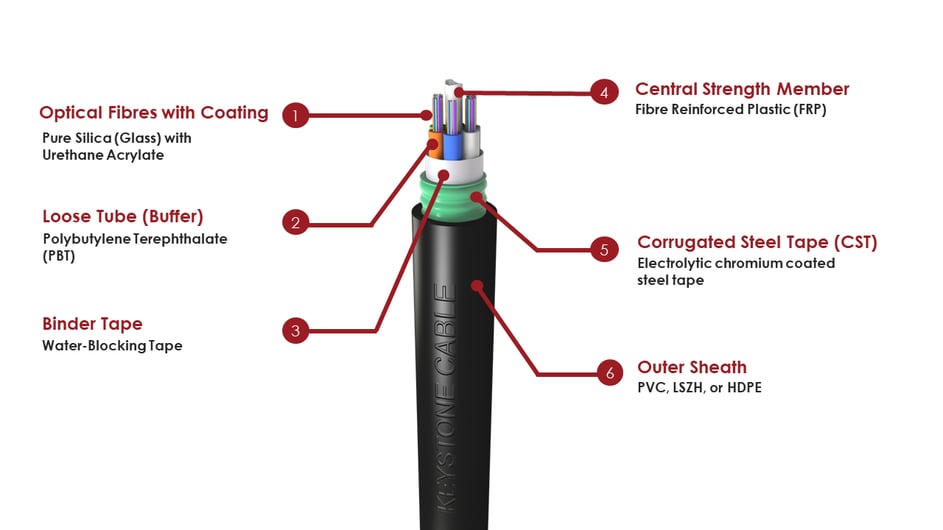Optical Fibre Cable - Deconstructed
Optical Fibre Cables (OFCs) transmit data in many critical telecommunication applications. These cables are suitable for long-distance applications due to their wide bandwidth. They are also known for having high transmission rates against electromagnetic interference (EMIs). Data in the form of optic monochromatic electro-waves can be transmitted with the aid of glass waveguides.
Selected Key Characteristics of an Optical Fibre Cable
![]() High Resistance to Noise
High Resistance to Noise
OFC is highly resistant to noise partially because of the construction, which includes non-metallic glass cladding. Data is transmitted through the cladding using light pulse signals, which makes the cable immune to noise and increases the transmission rate.
![]() Security
Security
Unlike copper cable systems, OFCs can be installed in a central location, and data is kept secure due to the high resistance to noise, such as EMIs. This results in the least number of corrupted data packets lost in your network system.
![]() Longer Bandwidth Distancing
Longer Bandwidth Distancing
OFCs have a more extended bandwidth that allows information to be transmitted faster than networks of the highest speed using copper cables. As OFCs are made of mediums with a lower power usage rate during data transmission. OFCs can reach approximately 10km in bandwidth distance compared to copper cables' traditional 100m distance.
Construction of an Optical Fibre Cable

| No. | Cable Part | Description |
| 1 | Optical Fibres with Coating |
|
| 2 | Loose Tube (Buffer) |
|
| 3 | Binder Tape |
|
| 4 | Central Strength Member |
|
| 5 | Corrugated Steel Tape (CST) |
|
| 6 | Outer Sheath |
|
Keystone's Commitment to Our Clients
We are committed to providing exceptional customer satisfaction to our clients through a quality management system.
Our experienced and highly-skilled inspectors ensure that newly manufactured optical fibres are tested in a clean, dust-free room environment and that each cable meets international standards (IEC, ITU-T, EIA/TIA).
To learn more about structured cabling solutions, check out our blog here.
For more enquiries regarding Keystone's optical fibre cables, contact us here.
